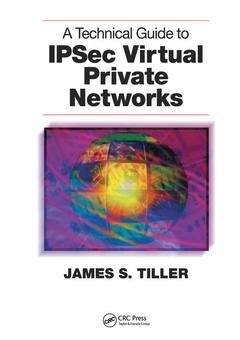Description
A Technical Guide to IPSec Virtual Private Networks
Author: Tiller James S.
Language: English
Subjects for A Technical Guide to IPSec Virtual Private Networks:
Keywords
VPN Gateway; VPN Solution; remote; IP Header; access; VPN Device; solutions; Outer IP Header; control; Tcp; list; Tunnel Mode; routing; Public Key; protocol; Replay Protection; tunnel; VPN Client; mode; Original IP Header; system; Public Key Encryption; Routing Protocols; IPSec VPN; Frame Relay; Originate IP Address; Message Id; VPN Technology; Split Tunnel; IKE; Destination IP Address; Block Cipher; Remote Access Solutions; Peer’s IP Address; Aggressive Mode
Publication date: 06-2017
· 17.8x25.4 cm · Hardback
Publication date: 12-2000
346 p. · 17.8x25.4 cm · Paperback
Description
/li>Contents
/li>Readership
/li>Biography
/li>
What is IPSec? What's a VPN? Why do the need each other? Virtual Private Network (VPN) has become one of the most recognized terms in our industry, yet there continuously seems to be different impressions of what VPNs really are and can become.
A Technical Guide to IPSec Virtual Private Networks provides a single point of information that represents hundreds or resources and years of experience with IPSec VPN solutions. It cuts through the complexity surrounding IPSec and the idiosyncrasies of design, implementation, operations, and security.
Starting with a primer on the IP protocol suite, the book travels layer by layer through the protocols and the technologies that make VPNs possible. It includes security theory, cryptography, RAS, authentication, IKE, IPSec, encapsulation, keys, and policies.
After explaining the technologies and their interrelationships, the book provides sections on implementation and product evaluation. A Technical Guide to IPSec Virtual Private Networks arms information security, network, and system engineers and administrators with the knowledge and the methodologies to design and deploy VPNs in the real world for real companies.




